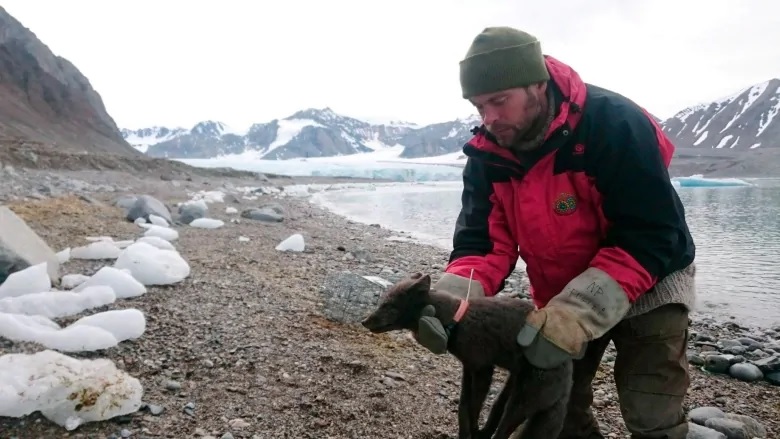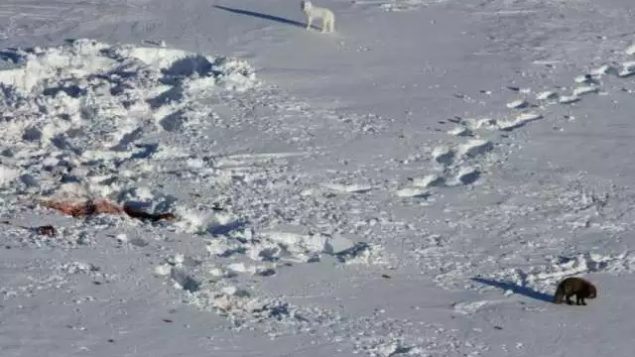Norwegian researchers say a young Arctic Fox fashioned what they say was an extraordinary journey last year, completing a 3,506-kilometre trip from Norway’s Svalbard archipelago to Canada’s Ellesmere Island via Greenland in record time.
How much longer similar trips can be made remains a mystery because of climate change, but let’s start with the good news.
Fitted with a tracking collar by the Norwegian Polar Institute, the two-year-old female fox left her birthplace on Norway’s Svalbard archipelago on March 1, 2018 and completed her trip on July 1, 2018.
With zigs and zags, she travelled a total of 4,415 kilometres, averaging 46.3 kilometres a day and once clocked a what researchers say is a shocking 155 kilometres in a single day.

This map shows the fox’s journey, which averaged more than 46 kilometres per day travelling a cumulative distance of over 4,400 kilometres–on her four-month voyage. (CBC)
“This is the fastest movement rate recorded for this species,” the Polar Institute said in a paper entitled “Arctic fox dispersal from Svalbard to Canada: one female’s long run across sea ice.”
“We couldn’t believe our eyes at first, the Polar Institute’s Eva Fuglei told NRK, Norway’s public broadcaster.
“We were quite thunderstruck,” said Fuglei, who led the study with colleague Arnaud Tarroux
“We thought perhaps it was dead, or had been carried there on a boat, but there were no boats in the area.
So much for the good news.
The bad news?

A female Arctic fox is fitted with a satellite tracking collar in Krossfjorden, Svalbard, a Norwegian archipelago, on July 29, 2017. (Elise Stroemseng/Norwegian Polar Institute via AP)
Key to her journey was the presence of Arctic ice, which researchers say allows the Norwegian foxes to reach Greenland and then North America.
As the ice shrinks, so does the foxes’ ability to migrate.
Shrinking polar ice pack already means foxes can no longer visit Iceland.
“This is another example of how important sea ice to wildlife in the Arctic,” Norway’s climate and environment minister, Ola Elvestuen, told the Polar Institute.
“The warming in the north is frighteningly fast. We must cut emissions quickly to prevent the sea ice from disappearing all summer.
Where the fox is now is anyone’s guess.
Her tracker stopped working in February.
With files from CBC, Postmedia, CTV, The Independent, NPR, Science Alert







For reasons beyond our control, and for an undetermined period of time, our comment section is now closed. However, our social networks remain open to your contributions.